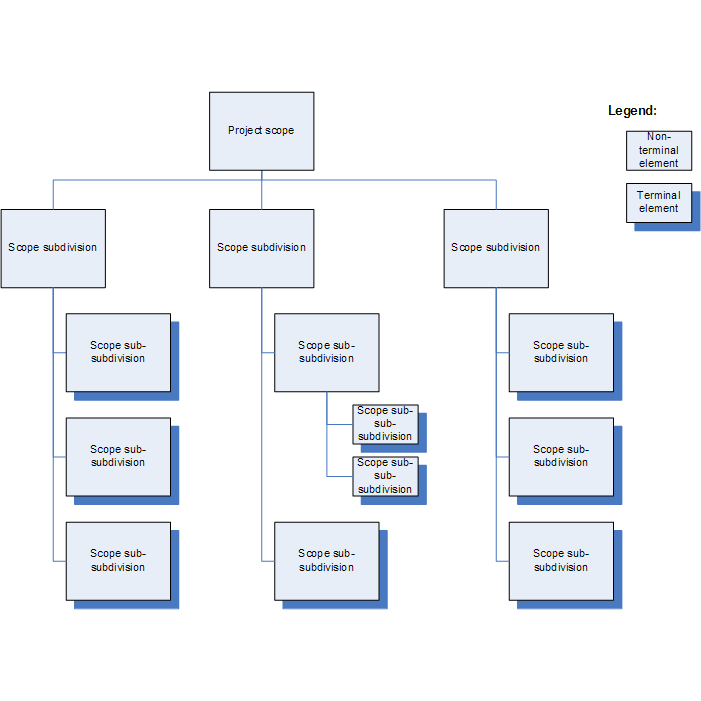 Project cost management is one of the most important sections of the Project Management Book of Knowledge (PMBOK) and seeks, from a theoretical and practical point of view, to determine and control the costs involved in the project execution. This is an important area of knowledge since no project can be considered without having set aside sufficient resources for its execution.
Project cost management is one of the most important sections of the Project Management Book of Knowledge (PMBOK) and seeks, from a theoretical and practical point of view, to determine and control the costs involved in the project execution. This is an important area of knowledge since no project can be considered without having set aside sufficient resources for its execution.
For this, time is an influential factor, since the cost estimation will in principle require a project working with timelines; that is, short-term goals are proposed for each phase.
Take reign of all the financial aspects of your projects with ITM Platform. Try it now for free.
It should be considered that if the total period for the delivery of a project is taken as an independent variable, there will be different risks associated with costs as a dependent variable. Namely: if you decide to carry out the project in the shortest possible time, you will be incurring the maximum cost, which requires impeccable coordination between all processes and a very high risk exposure in the appearance of deficiencies in coordination. If, on the other hand, the decision is made to extend the duration, the exposure to environmental risk increases: external circumstances are more likely to affect the initial budget.
How to estimate the costs of a project
The actions that revolve around this go beyond a mere quantitative estimate by a manager or project management team, since internal and external aspects that directly influence the achievement of the project must be carefully estimated.
Obviously, costs cannot be estimated without an exhaustive and accurate collection of requirements. The first reference of the project manager, therefore, is the Work Breakdown Structure (WBS).
- Define the cost of each requirement. In many cases, these requirements will have a known cost and a trusted supplier; in other cases they will be more difficult to determine and should be roughly estimated;
- Define the amount of work needed to complete all requirements and the cost per hour of each type of worker involved. This calculation serves as the baseline for the human cost of the project.
- From the total of the two sums, the project manager must make the necessary adjustments related to the project inconsistencies and its plan, taking into account the duration of the project and how it affects the organization of the tasks. Estimation of costs. This implies the calculation of various circumstances and factors available and foreseeable during its lifetime, such as risks and price increases (in case of products involved), rents, materials, equipment, facilities, etc. For this, a "Reference Line" is created based on the time that they estimate the tools and economic resources that would be provided to each activity. This connects the aspects as mentioned above.
The more narrow the scope, the more reliable the budget will be for the project. Of course, the project manager should not impose his estimates, but rely on a team of experts and experts in this field, who should evaluate the tasks that create the plan, and perform these assessments.
From Utopia to Facts
The area of knowledge of the project costs is not exclusively financial, but requires techniques, specialized analysis and knowledge that allow to be aware of all the factors that can modify a project. These include execution schedules, the assessment of possible risks, coordination of meetings with stakeholders, which may need to address suggestions that affect the scope or mode of delivery, respect for the internal policies of a company, Attention to market conditions, experience in similar past projects, etc. Among the more strictly financial aspects are exchange control and fiscal aspects, which can be especially complex in international projects, inflation, and the corporate structure of financial control.
Also, turning information into knowledge requires tools that facilitate an approximation to the facts.
- Units of measure: Depending on the object to be monitored, it will be estimated whether it can be measured with units of time (man hours, days, weeks, months), metric units (meters, centimeters, millimeters, tons, liters), and even in units of payment (monthly, fortnightly, single payment, etc.).
- Accuracy: It varies according to the scope of the project, rounding figures around each aspect or phase that gives certainty of the costs that will be required for each one.
- Cost limits: It is essential to determine this amount so that, in each cost review, there is a precondition
- Cost limits: It is essential to determine this amount so that, in each cost review, there is in advance a conditioning of what is going to be required in each case. With this tool it is intended to keep the investment within the premeditated parameters and, if not, to take the corresponding corrective actions.
- Measurement of the effort granted: These are performance indicators that are analyzed in the costs.
- Management of information about cost management: Stakeholders should be fully and regularly informed of the management that is being carried out, either periodically (daily, weekly, fortnightly, monthly) and by providing reports Or any other ordinary means of communication.
Determination of the budget
Taking as a starting point the costs related to each activity, each of the estimates is added individually or jointly, to stabilize the reference line or cost, for the sole purpose of determining the budget of a project, Which will influence the funds allocated to it.
Costs control
It is necessary to monitor the consumption of costs in any situation of the project and to update them, if necessary, according to the cost baseline adjustment that was created. Any increase that is deemed relevant in project costs should be reviewed under an integrated perspective of the changes. However, its effectiveness lies in the management of the baseline, which maintains the cost performance and estimates the deviations occurred.
The aforementioned constructs the way towards an effective estimation of the costs of the project from the beginning. Successful budgeting is not as important as accurately picking up activity notifications. From the exhaustive control of deviations, it is possible to allocate the necessary resources to compensate for the unplanned under-coverage.



